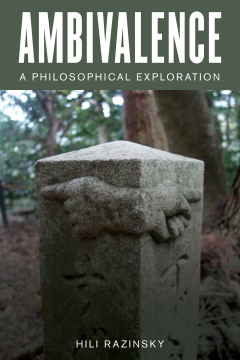
Additional Information
Book Details
Abstract
Ambivalence (as in practical conflicts, moral dilemmas, conflicting beliefs, and mixed feelings) is a central phenomenon of human life. Yet ambivalence is incompatible with entrenched philosophical conceptions of personhood, judgement, and action, and is denied or marginalised by thinkers of diverse concerns. This book takes a radical new stance, bringing the study of core philosophical issues together with that of ambivalence. The book proposes new accounts in several areas – including subjectivity, consciousness, rationality, and value – while elucidating a wide range of phenomena expressive of ambivalence, from emotional ambivalence to self-deception. The book rejects the view that ambivalence makes a person divided, showing that our tension-fraught attitudes are profoundly unitary. Ambivalence is not tantamount to confusion or to paralysis: it is always basically rational, and often creative, active, and perceptive as well. The book develops themes from Wittgenstein, Davidson, Sartre, and Freud. It engages with contemporary debates in Analytic Philosophy in addition to work ranging from Aristotle to Cultural Studies and Empirical Psychology, and considers a rich set of examples from daily life and literature.
The author has produced a bold and fiercely independent account of ambivalence; an account which is rich, nuanced and detailed. Razinsky adopts a framework which, broadly speaking, is both Wittgensteinian and phenomenological. She turns to such diverse authors as Sartre, Freud, Bernard Williams and Philip Koch and with a little help from these friends devises her own notion of ambivalence.
Avishai Margalit, Schulman Professor Emeritus of Philosophy, The Hebrew University of Jerusalem
One of the main strengths of this book is a detailed map of terms and theories connected with the phenomenon of ambivalence Razinsky depicts. It could be useful for further research on such topics as emotions, values, personhood, rationality, as well as the relations between them. […] Razinsky’s work provides helpful insight into considerations of the problem of ambivalence in general. On the one hand, the author exhaustively reveals the problems of ambivalence, its rational character, the relations of ambivalence with consciousness, factual belief, value judgment and desire, the differences between the notions of “unity in plurality” and harmonized, plural persons. On the other hand, she provides insights into avenues of further research of related problems, such as doubt, cynicism and irony.
Hili Razinsky's philosophical exploration of ambivalence is not only about ambivalence: it might be read as a call for using more substantial, phenomenologically nuanced, and real-life faithful terms in contemporary analytic philosophy. Concepts, such as belief, desire or emotion, which are at the center of many philosophical discussions about subjectivity, are often difficult to project onto real subjects. They seem to be fossils that have already lost their vividness. Some of them are brought to life in Razinsky's book.
Razinsky … argues that ambivalence is not merely common but pervasive, and that the possibility of ambivalent states, whether of belief, desire, or emotion, is built into the nature of those states and the way in which we conceptualize them from the start. One advantage of this approach is that it rejects from the start any possibility of treating the phenomena in question as merely marginal
“By an impressive combination of acute analysis, rich phenomenological description and interpretation of narratives, Razinsky brings our propensity to possess ambivalent feelings, desires and beliefs about objects to the center of philosophical research on subjectivity. In this excellent study, she claims ambivalence is a capacity of rational creatures to simultaneously have two opposing attitudes, revealing the ineradicable plurality of their selves and prompting them to live with it in the right way, rather than an inability to fix one’s mind and make it consistent.”
Axel Honneth, Professor of Philosophy, University of Frankfurt and Columbia University
The merit of this book lies in showing that ambivalence is often central to our capacity to act, care, and respond to reality. This implies that flourishing is often a matter of how a person shapes her ambivalence, rather than of whether she succeeds in avoiding ambivalence. Razinsky’s book is full of real life examples which make the arguments clearer and more convincing. The book is well written, interesting, surprising, and original.
Hili Razinsky is a researcher at the Center of Philosophy, University of Lisbon
Table of Contents
| Section Title | Page | Action | Price |
|---|---|---|---|
| _GoBack | 125 | ||
| _GoBack | 273 | ||
| _GoBack | 285 |
